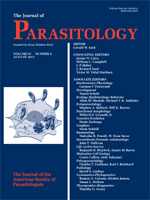Rapid and reliable detection and identification of coccidian oocysts are essential for animal health and foodborne disease outbreak investigations. Traditional microscopy and morphological techniques can identify large and unique oocysts, but they are often subjective and require parasitological expertise. The objective of this study was to develop a real-time quantitative PCR (qPCR) assay using melting curve analysis (MCA) to detect, differentiate, and identify DNA from coccidian species of animal health, zoonotic, and food safety concern. A universal coccidia primer cocktail was designed and employed to amplify DNA from Cryptosporidium parvum, Toxoplasma gondii, Cyclospora cayetanensis, and several species of Eimeria, Sarcocystis, and Isospora using qPCR with SYBR Green detection. MCA was performed following amplification, and melting temperatures (Tm) were determined for each species based on multiple replicates. A standard curve was constructed from DNA of serial dilutions of T. gondii oocysts to estimate assay sensitivity. The qPCR assay consistently detected DNA from as few as 10 T. gondii oocysts. Tm data analysis showed that C. cayetanensis, C. parvum, Cryptosporidium muris, T. gondii, Eimeria bovis, Eimeria acervulina, Isospora suis, and Sarcocystis cruzi could each be identified by unique melting curves and could be differentiated based on Tm. DNA of coccidian oocysts in fecal, food, or clinical diagnostic samples could be sensitively detected, reliably differentiated, and identified using qPCR with MCA. This assay may also be used to detect other life-cycle stages of coccidia in tissues, fluids, and other matrices. MCA studies on multiple isolates of each species will further validate the assay and support its application as a routine parasitology screening tool.
How to translate text using browser tools
1 August 2011
Detection and Differentiation of Coccidian Oocysts by Real-Time PCR and Melting Curve Analysis
Laura F. Lalonde,
Alvin A. Gajadhar
ACCESS THE FULL ARTICLE

Journal of Parasitology
Vol. 97 • No. 4
August 2011
Vol. 97 • No. 4
August 2011




